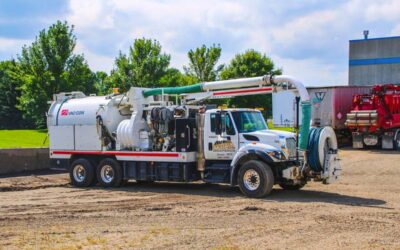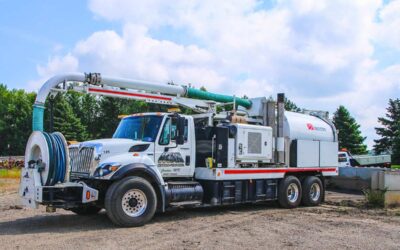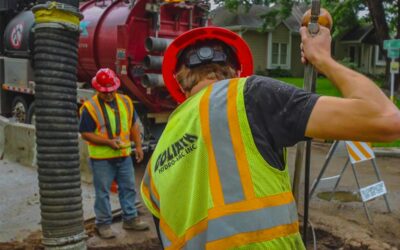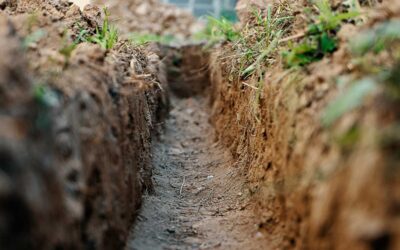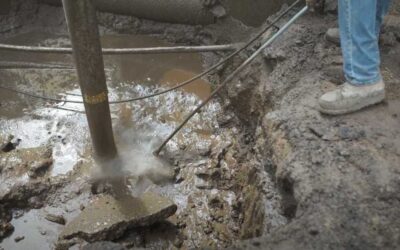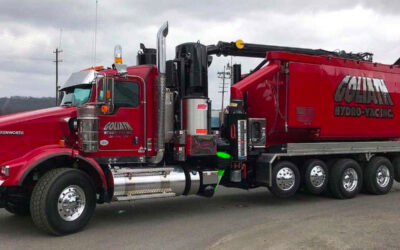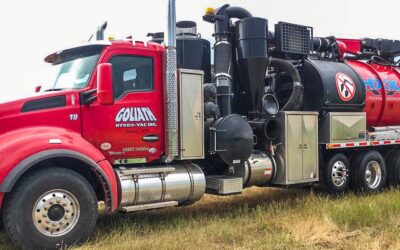Hydrovac Excavation vs. Traditional Excavator: Which Method Is Better?
On the surface, excavation couldn’t be simpler. Just…remove the dirt. However, the choice of excavation method used has a huge impact on the efficiency, affordability, and safety of the project.
The traditional method has been to use a backhoe or excavator. These machines have long been prized for their ability to quickly move large volumes of soil while breaking through almost any would-be impediment. Yet, in recent years, Hydrovac excavation has exploded in popularity. As a result, a lot of contractors have been left wondering if Hydrovac excavation is a better solution for their needs.
Let’s look at the pros and cons of these two methods, and dig into the reasons for choosing one over the other.
Comparing Excavation Options: the Two Most Common Methods
This blog will examine traditional excavation vs vacuum excavation, as these are by far the two most broadly applicable excavation methods used today. But before we get too far in, we need to define our terms.
What are Traditional Excavation Methods?
Traditional excavation refers to the use of earth-moving equipment like backhoes and excavators. These machines use steel buckets positioned at the end of an articulated arm. The operator drives the bucket into the soil to scrape or scoop it away.
What is Vacuum Excavation (Hydro and Air)?
Vacuum Excavation uses water or air to break apart the soil, and a vacuum to suck away the loosened material. These systems are typically mounted on a large truck with a boom arm that allows the necessary hoses to be re-positioned within the working area. For the purposes of this blog, we’ll focus on hydro vacuum excavation in particular.
Is Hydrovac Excavation New?
Traditional excavation methods have reigned supreme for generations, while vacuum excavation has only recently become a major contender. However, this doesn’t mean Hydrovac excavation is exactly new on the scene.
Water has been used for earth moving since at least the 1800s, when miners used steam-powered pressurized pumps to direct water and erode soil. However, it wasn’t until the mid 1900’s that vacuums were introduced to remove the dislodged material.
In 1969, a US trademark application was filed by the Myers-Sherman Company for the “ExcaVactor”, a machine for “digging holes and removing the loose earth by vacuum”. The first use for these machines was clearing out catch basins and sewer pipes. However, they were quickly adopted for the purposes of soil excavation. Since the 1980’s, hydro excavation trucks have experienced a steady rise in popularity, bringing them to their current position challenging traditional excavation methods.
Is Hydrovac Considered a Destructive Excavation Technique?
The oft cited reason for Hydrovac’s popularity is that it’s non-destructive. This isn’t exactly true, at least not in the literal definition of destruction.
All excavation methods must be destructive to some extent. Their purpose is to break apart and remove soil and sediments, after all. Hydrovac accomplishes this extremely effectively. However, hydro excavation can be accurately described as non-destructive when it comes to its impact on utility lines and other delicate, underground structures.
What Are the Advantages of Hydrovac Excavation vs. Traditional Excavation?
The number one advantage cited for Hydrovac excavation is its ability to excavate over and around utilities without damaging them. Traditional excavation smashes through electrical lines, gas mains, pipes, foundations, etc. Markings are supposed to protect these elements, but utilities can be unexpectedly shallow, misaligned, or simply unknown to the markers. Once struck by heavy machinery, these utilities become enormous (and expensive) safety hazards.
However, hydro excavation can be used safely on and around utilities, eliminating the risk of damage even if an unexpected line is revealed. This makes it the top choice for precise potholing and daylighting jobs. It also makes hydro excavation an excellent choice for larger projects where the condition and placement of utilities is uncertain.
What Are the Disadvantages of Hydrovac Excavation vs. Traditional Excavation?
Traditional excavation is most useful on large sites with no utilities present. This is because, when very large amounts of soil need to be removed, hydro excavation can be slowed by the need to dump vacuumed materials and refill water tanks.
Traditional excavation also allows for removed dirt to be returned as backfill once the work is completed. With Hydrovac excavation, the removed dirt becomes a slurry and must be removed from the project and taken to an approved dumping site to dry out.
When Should I Consider Traditional Excavation Methods?
Generally speaking, hydro excavation is a safer, more flexible excavation method than traditional excavation. However, there are scenarios where traditional excavation makes more sense.
Projects requiring a large amount of dirt to be excavated, and where no utilities are suspected, remain excellent candidates for traditional excavation. Or, if it’s a large site with known utilities crossing a portion of it, a combined approach may be best suited to the task. One where hydro excavation is used in the vicinity of the utilities, and traditional excavation works on areas known to be utility-free.
Get Expert Advice
Every project is different, and that can make choosing the right excavation a confusing process. If you’re still wondering whether hydro excavation would work for you, now’s a great time to get the experts to weigh in.
Goliath has 20 years of experience providing hydro excavation services all across the Midwest. Contact us today to get your questions answered and your project underway!
RELATED POSTS
What are the Key Components of Industrial Cleaning
Key Components of Industrial Cleaning Industrial cleaning refers to the specialized process of cleaning...
The Basics of Industrial Cleaning
The Basics of Industrial Cleaning Industrial cleaning is essential for the smooth and efficient operation of...
What is Industrial Cleaning
What is Industrial Cleaning? The importance of maintaining clean and sanitary manufacturing facilities cannot...
Trenching Safety
Trenching Safety Trenching is the process of digging deep and narrow excavations in the ground. The primary...
Types of Trench Excavation
Types of Trench Excavation Trenches are an essential aspect of excavation and construction projects, serving...
What is Trenching?
What is Trenching? Imagine for a moment the complex web of utilities that run beneath the surfaces of our...
Vacuum Excavator for Horizontal Drilling
Vacuum Excavation for Horizontal & Vertical Drilling Picture this: a drilling technique that doesn't rely...
Hydro Excavation Safety Tips and Procedures
Hydro Excavation Safety Tips Hydro excavation, a cutting-edge method of digging, harnesses the power of water...
Hydrovac Truck Winter Maintenance Tips: Keeping Your Fleet Ready for Cold Weather
Hydrovac Truck Winter Maintenance Tips Hydro-excavation trucks, also known as hydrovac trucks, utilize...
Monthly Preventive Maintenance for Vacuum Trucks
Monthly Service for Vacuum Truck Maintenance Vacuum trucks play a vital role in efficiently collecting and...

